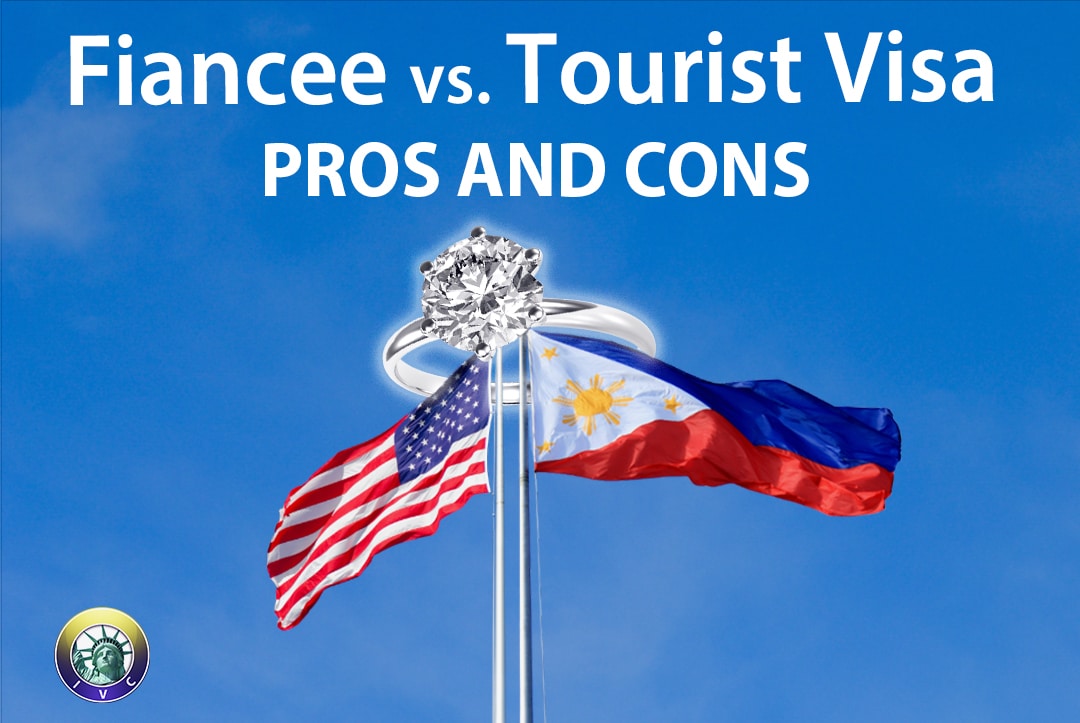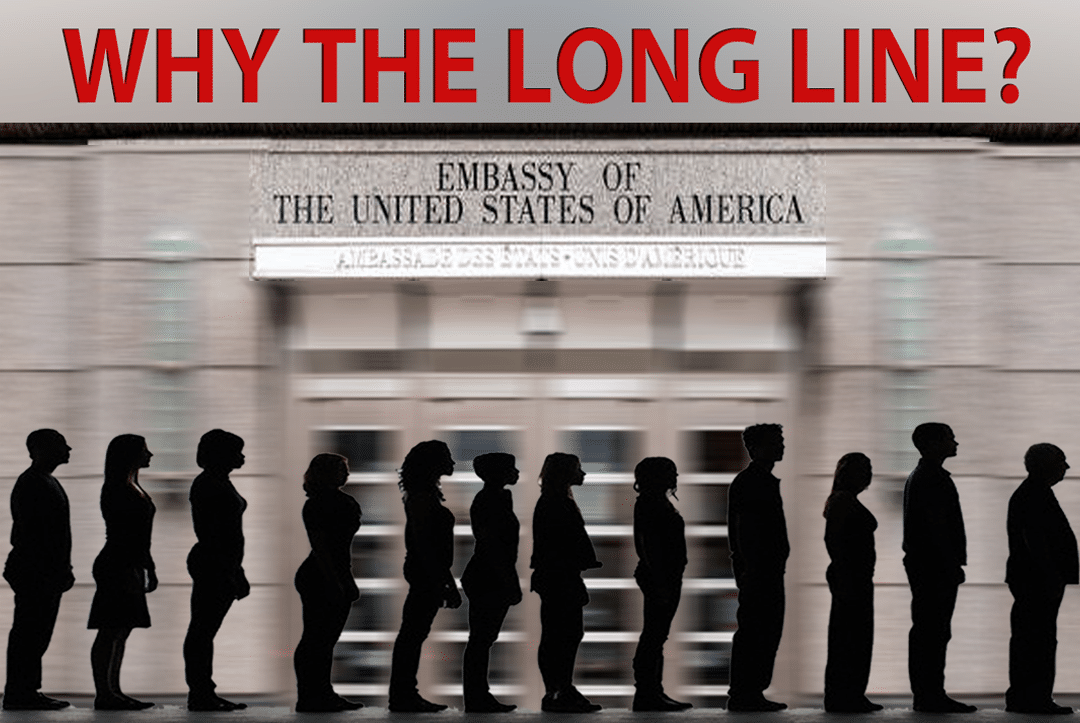
The Visa Office released the June 2020 Visa Bulletin around May 22, 2020. In the past, the Visa Office would publish the report between the 11th and 20th of each month. This Visa Bulletin report informs applicants of one of two things. That they can start processing their immigrant visa applications or that they should have received an interview notice at the specified US Embassy or consular post.
June 2020 Visa Bulletin Report
On April 24, 2020, President Donald J. Trump issued a 60-day ban on issuance of green cards to immigrants. Prior to this, he signed two other executive orders restricting the eligibility of visa applicants.
One of these proclamations took effect on February 24, 2020. This executive order required the consul or immigration officer to determine if an applicant for permanent residence is likely to become a public charge.
Immigrant visa waiting list
The State Department’s Visa Office November 2019 report shows 3,620,240 immigrant visa applicants worldwide waiting for their green cards. Of these, 3,494,252 were beneficiaries of family-based immigrant visa petitions. These applicants have petitions in various family-preference categories. Only 125,988 applicants had employment-based petitions.
Whether your petition is family-based or employment-based, the State Department will issue your immigrant visa if you qualify. To qualify, you must successfully pass an interview at the specified consular post.
Competition for a visa number is fierce, with the per-country allocation currently set at 25,620 per year. This ceiling covers applicants residing outside or in the U.S.
The three executive orders heightened the interest and anxiety of immigrant visa applicants. The Visa Bulletin reflects the effects of the 60-day immigration ban on visa movements at consular posts worldwide.
The U.S. Visa Bulletin can be confusing. We’ve decoded it, though, making it easier to understand. Read more about the Visa Bulletin and how it works.
Processing Dates, or Date for Filing Chart of the Visa Bulletin
The State Department publishes two charts: the Final Action dates; and the Dates for Filing. The last chart will alert you on when to begin preparing you documents. You may begin preparing your documents and pay for the Affidavit of Support if your priority date is on or earlier than in the Date for Filing Chart. The first step is to designate or appoint an agent to start, monitor, and complete the visa processing with the National Visa Center, or NVC.
How the Date for Filing Chart moved from Jan. to June this year
| Family-Sponsored | All Countries except those Oversubscribed January 2020 | All Countries except those Oversubscribed June 2020 | Philippines January 2020 | Philippines June 2020 |
|---|---|---|---|---|
| F1 | 15MAR14 | 15FEB15 | 15SEP09 | 01SEP11 |
| F2A | 01NOV19 | 01MAY20 | 01NOV19 | 01MAY20 |
| F2B | 08APR15 | 01DEC15 | 01OCT09 | 01MAY11 |
| F3 | 15JUL08 | 15MAR09 | 01SEP99 | 15NOV01 |
| F4 | 22JUL07 | 31JUL07 | 01NOV99 | 01SEP01 |
For the EB3 and Other Workers category for the Philippines, the processing date moved slower compared to the Family-based counterparts. In January, the processing date was January 1, 2019. For June, the date moved only three months forward to April 1, 2019.
January and June 2020 Visa Bulletin: Final Action Dates
If your priority date is on or earlier than that indicated in below, you should have paid the current immigrant visa application fee of USD220. Not only this, but you should have also uploaded documents to establish your continuing eligibility for your preference category.
The chart below refers to the Final Action dates of the January 2020 and June 2020 Visa Bulletin. The figures show how the Family-preference categories moved in the Philippines, where historically, there have been more applicants than visas available.
| Family-Sponsored | All Countries except those Oversubscribed January 2020 | All Countries except those Oversubscribed June 2020 | Philippines January 2020 | Philippines June 2020 |
|---|---|---|---|---|
| F1 | 15JUL13 | 22MAY14 | 15JAN09 | 01FEB11 |
| F2A | C | C | C | C |
| F2B | 08AUG14 | 15MAR15 | 01FEB09 | 01SEP10 |
| F3 | 15NOV07 | 15APR08 | 01JAN99 | 15APR01 |
| F4 | 01FEB07 | 08AUG06 | 01MAR99 | 01FEB01 |
The figures in the chart above illustrates how— in a period of six months—the categories have moved forward, stayed the same or retrogressed (moved back).
Movement of Visa Numbers
Going back to the visa movement for all countries except those oversubscribed, you will see that the following preference categories moved over a 6-month period:
- F1: 10 months forward.
- F2A: Current.
- F2B: 7 months forward.
- F3: 5 months.
- F4: 6 months retrogression.
The same fast-forward pattern shows for Philippine immigrant visa applicants, except for the F4 category.
- F1: 1 year, 10 months, and 2 weeks.
- F2A: Current, visas are available
- F2B: 1 year 7 months
- F3: 2 years, 3 months, and 2 weeks
- F4: 1 year, 11 months
In January 2020, the priority date cut-off for applicants from the Philippines in the Third Employment-based preference categories (EB3 and OW), was March 15, 2018. Then for the next four months, the cut-off date retrogressed, remaining at January 1, 2017.
By June 2020, the EB3 / OW cut-off date for Philippine applicants sprinted to November 8, 2017, a fast-forward move of 10 months and a week.
However, this June 2020 cut-off date still fell short 4 months of returning to the March 15, 2018 in January.
Has your petition been filed? Or do you need additional information about the USCIS filing process? Check out our post on How to Petition a Family Member to the U.S.
Visas Issued from February to May 2020
Visa numbers are set by law. The Executive Branch, under any president, cannot change the worldwide and per-country allocation. But Mr. Trump certainly can slow down, suspend, or freeze the issuance of visas. The executive orders validate this.
With the third Executive Order citing public charge abuse and risks to the health and national security of the U.S., the 60-day immigration ban drastically reduced the immigrant and nonimmigrant visas issued worldwide. Check out the table below.
| Month of Issuance 2020 | Immigrant Visas World-wide | Non-immigrant Visas World-wide |
|---|---|---|
| February | 37,658 | 578,893 |
| March | 24,383 | 400,503 |
| April | 1,521 | 46,855 |
As for the Philippines, the number of immigrant visa issued mirrored the world-wide trend as well.
| Visa Category | February | March | April |
|---|---|---|---|
| IR1, IR2, IR5 | 545 | 247 | 15 |
| F1 | 105 | 62 | 0 |
| F2A | 236 | 169 | 0 |
| F3 | 71 | 57 | 5 |
| F4 | 163 | 109 | 0 |
Factors that affect continuing eligibility
Imagine the queue of immigrant visa applicants waiting for their priority date to be current, or the issuance of their visas, or waiting for the interview dates. The interview would happen only if the National Visa Center completes processing of the fees and documents uploaded by applicants on the NVC online system.
As of May 25, 2020, NVC issued two announcements, both not favorable to immigrant visa applicants.
- Staff shortage and processing slowdown. Due to the global COVID-19 outbreak, the National Visa Center is currently working with reduced staff.
- NVC to stop responding to mail inquiries. On June 1, 2020, National Visa Center will no longer accept or respond to inquiries through mail. By modernizing the pre-processing of visa applications, the NVC has streamlined services to applicants, U.S. Embassies and consulates.
With the announcement above, you may only send mail to the NVC if it sends you instructions to do so.
The future of migration to the U.S. Will the 60-day immigration ban be permanent?
The White House and President Trump are determined to deliver on their 2016 campaign promises. After all, the key to re-election in November 2020, is to show:
- achievement in the flow and types of immigrants America deem acceptable.
- and push for immigration changes in the next four years.
The COVID-19 outbreak gave President Trump an acceptable way to restrict the entry of “unwanted migrants.” Yet, the U.S. President insists on reopening American businesses and other establishments (including churches) soonest, claiming COVID-19 will magically disappear after the November election.
But what happens if they find a vaccine for the virus and the pandemic ends? Will the visas come back to a healthy-issuance state?
Probably not, if the tone and cadence of the recent White House statements are any indications.
Three factors are at play here, making a drastic cut in legal immigration a distinct probability rather than a distant possibility. The first is if Mr. Trump wins by repeating his 2016 achievement of defying the pundits and polls. Second is if the Republican Party remains the majority in the Senate. And last, is if the Republican Party picks up enough seats from the House of Representatives. The restriction and reshuffling of immigrant visa categories may very well be permanent.
With that, the Visa Bulletin will change in scope and pace. The visa categories could change.
And the overall visa allocation will move towards skilled migrants, away from the chain migration of unwanted, cheap, low-skilled migrants that the Family-preference category engenders.
Until now, America has never gotten it right. So Far Right. It’s an American First.










